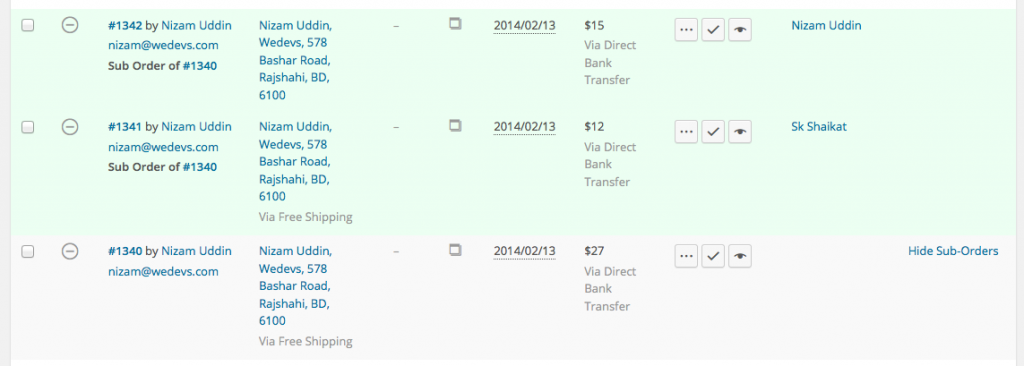We know that there are different types of customers who come to buy things in the marketplace. Some customers prefer to purchase multiple things from different vendors at the same time, or some just buy one under one order.
But in case, if any customer purchases from a different seller in one order, then what will happen? Does it count as one order or make multiple orders.
In a basic sense, WooCommerce stores every product in a single order. So if one order includes multiple products, does it create any sub-order dashboard or not? The answer is No.
So how users can get rid of this issue? Let’s see:-
How Dokan Helps Users To Manage Sub-Orders?
Well, Dokan does something on its own. It monitors every order, if an order contains products from multiple sellers, it splits the products, coupons, shipping charges, and everything based on each seller and creates separate sub-orders for every seller from the parent order. Every seller see’s the sub-order in their dashboard.
The customer pays against the parent order only. If the payment is completed for the parent order, child order statuses get updated. Every seller manages their orders (sub-order) individually. Once every sub-orders is completed, the parent order is marked completed automatically.
If you are wondering, if the orders get duplicated, won’t the WooCommerce report will show double earning? Well, no. Dokan filters the sub-orders from the WooCommerce report and you see only the original transactions with no duplicates.

Any Alternative?
We didn’t find any other alternative to accomplish this task! As Etsy does, it gives the option to place an order for each seller. But as it’s very difficult to do so in WooCommerce, we had to choose this way.